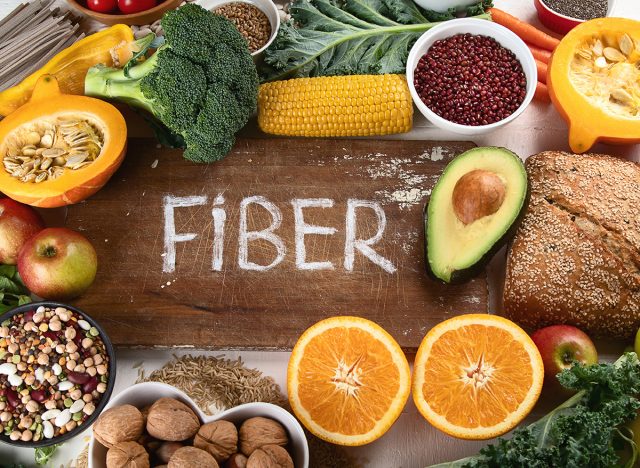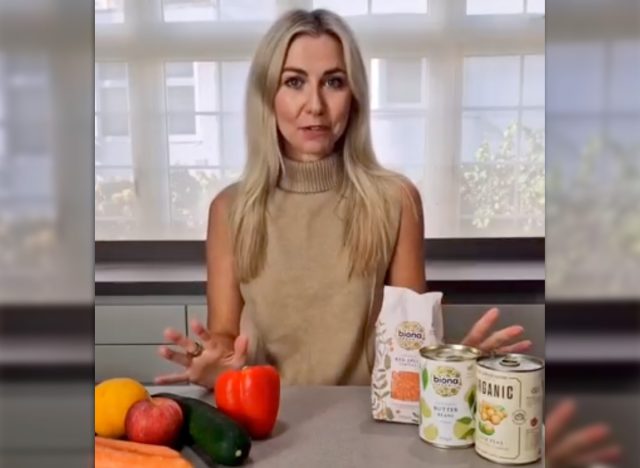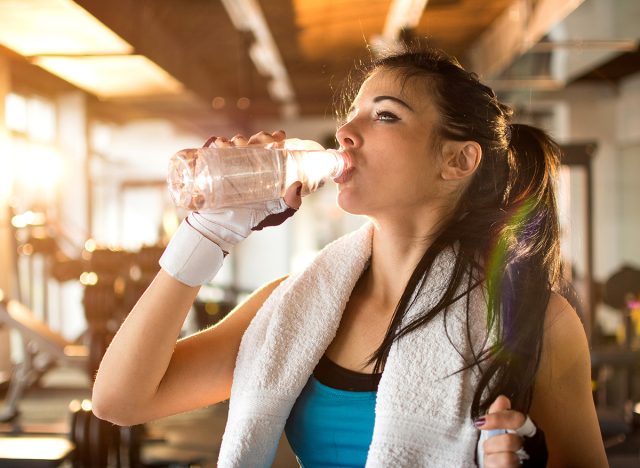6 Ways to Increase Your Fiber Intake Without Bloat, Says Nutritionist
Fiber is an important part of gut health. But just as eating enough fiber for digestion is crucial, not having enough or consuming it the wrong way can also lead to not-so-pleasant side effects. UK-based nutritionist Clarissa Lenherr specializes in gut health, IBS, and beating "the bloat." In a recent Instagram video, she discusses how eating too much fiber too fast isn't a good thing and what you can do about it. "How to increase your fiber without getting symptoms," she says in her clip. Body Network's Resident RDN, The Diet Diva, Tara Collingwood, MS, RDN, CSSD, LD/N, ACSM-CPT, a Board Certified Sports Dietitian, co-author of the Flat Belly Cookbook for Dummies, also weighs in on the digestive health topic.
You Can't Eat "Loads of Fiber"

"We all know that fiber is good for us and especially good for our gut, but does that mean that we should run around eating loads of fiber and expecting our gut health to get great? Unfortunately, it doesn't really work like that," she explains.
RELATED: I Lost 70 Pounds From Hot Girl Walks and This Is Exactly How I Did It
Eat Fiber "Slow and Slow"

"My advice with fiber is slow and slow," she recommends. "Boring, I know, but that is the best way to increase fiber, to help look after your gut, and to avoid symptoms."
What Happens When You Eat too Much Fiber

"Eating too much fiber can cause excessive gas which is definitely not fun especially when you're at the office," explains Collingwood. "Believe it or not, too much fiber can also potentially lead to constipation if you aren't keeping up with hydration."
Drink Lots of Water with Fiber

The best solution? Lots of water. "You need to drink a lot of water when you increase your fiber otherwise it will not MOVE through the digestive tract," she says.
RELATED: The Simple Best Tip to Help Your Gut From a Nutritionist
A Few More Tips From Our Expert

Collingwood offers a few more tips on how to add fiber without side effects. "Keep a record of which foods might be giving you excessive gas and go easy on those foods and increase fiber in other areas," she says. Also, "try just one new high fiber food per day so you can see how it affects you," she suggests. And, add fiber slowly. "Try to just add about 5 grams more each day for about a week or so and then add another 5 grams so your digestive tract can get used to the additional fiber."
💪🔥Body Booster: Don't aggressively add fiber to your diet. Make sure to add slowly and also make sure you are drinking plenty of water.





